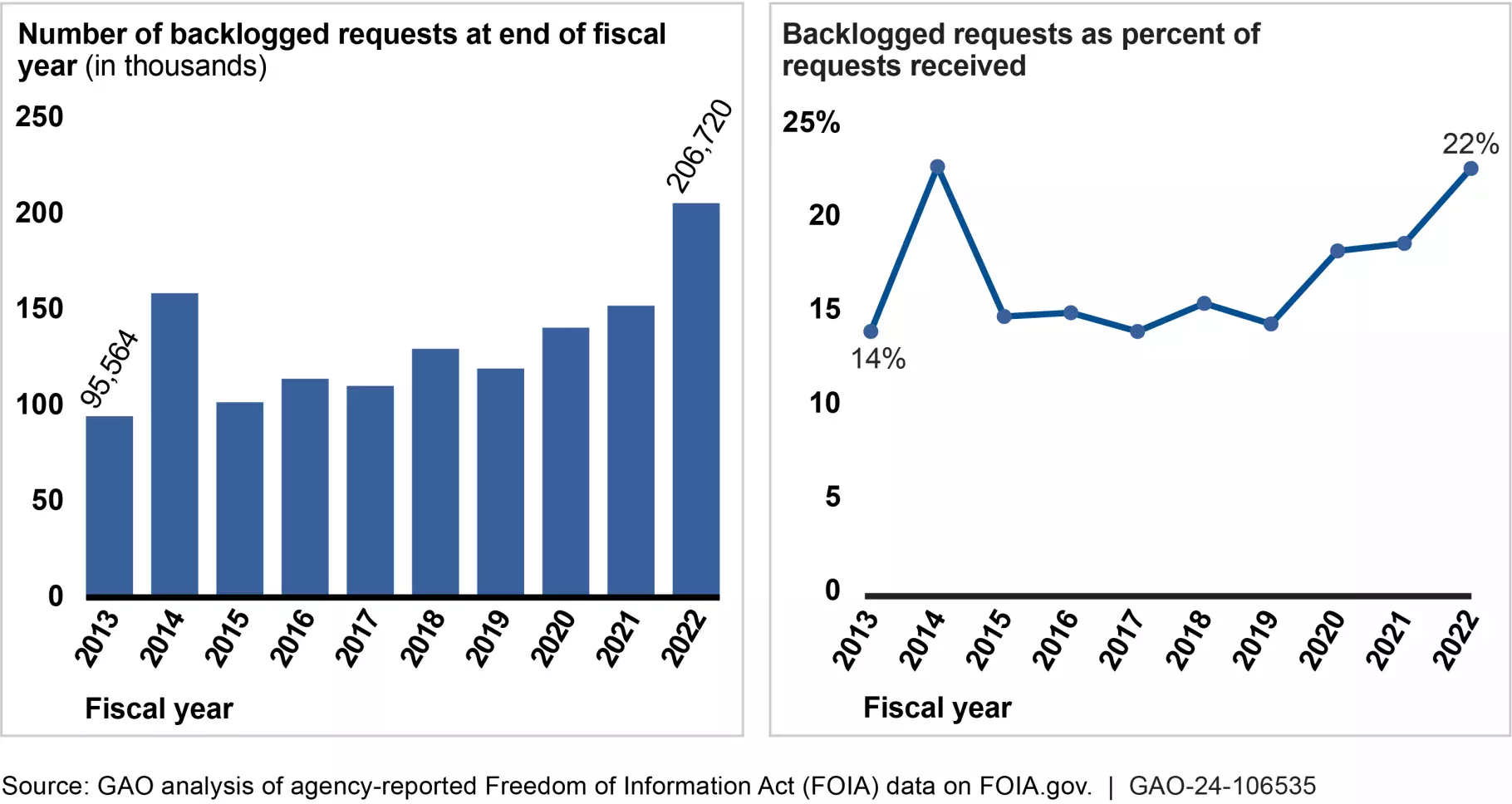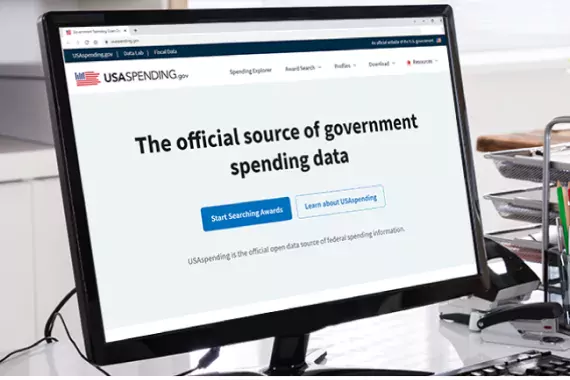FOIA Backlogs Hinder Government Transparency and Accountability
Each year, media outlets, businesses, and members of the public file hundreds of thousands of requests for government records on a wide range of topics—from consumer safety to national security. Their ability to access these records is protected under the Freedom of Information Act (FOIA).
While FOIA is an important tool for holding the government accountable, many who file FOIA requests have experienced delays in getting them processed in a timely manner. These backlogs, which result from agencies not responding to requests within required time frames, are a perennial problem for many federal agencies and those looking for transparency from their government. In FY 2022, the government-wide request backlog surpassed 200,000 requests for the first time.
Today, in recognition of Sunshine Week (March 10-16)—which shines light on the importance of public records and open government—our blog post looks at our new report about FOIA backlogs and efforts to address them.
End of Year FOIA Request Backlogs, Government-wide
Image

More complex FOIA requests have contributed to backlogs
FOIA requests are generally required to be processed within 20 business days. But in recent years, federal agencies have faced larger volumes of requests and more complex requests, among other challenges.
Agencies officials told us they increasingly receive FOIA requests that consist of multiple parts and that ask for records on different topics and in different formats. Between 2013 and 2022, the number of complex requests agencies processed more than doubled, while the proportion of complex requests processed within 20 days decreased.
Complex FOIA Request Processing and Timeliness, Government-wide
Image

Agencies also told us they sometimes faced challenges dealing with staff turnover, getting timely responses from other agencies on decisions to release certain records, and dealing with the demands of responding to lawsuits from requesters.
Agencies have taken several steps to address their backlogs. Some agencies used data to better understand the amount of time it takes to process requests to identify problem areas. Some also negotiated with FOIA requesters to narrow the scope of requests, created teams to reduce backlogs, and updated their technology to improve request processing. For many agencies, however, backlogs remain a challenge.
What more can be done to help?
The Department of Justice oversees compliance with FOIA. Its Office of Information Policy helps agencies administer FOIA by providing guidance, training, and other resources. DOJ also oversees agencies’ annual FOIA reporting requirements, which include plans for reducing backlogs and information on how long it takes to process requests.
As part of its efforts to address backlogs, the Office of Information Policy directs agencies with over 1,000 backlogged requests to develop plans for reducing their backlogs. But the Office does not specify what these plans should include. As a result, we found that agencies’ plans often lacked key elements of an effective plan, such as goals and milestones for tracking progress. In our new report, we recommended the Office of Information Policy help agencies improve the usefulness of their plans by providing additional guidance on the specific elements agencies should include.
Agencies are also required to report on average processing times to DOJ. But we found that many agencies have reported inaccurate times. We recommended the Office of Information Policy improve its data checks and training materials to help agencies improve the reliability of data on processing times.
Taking these steps would ensure that agencies are better positioned to assess their FOIA operations, identify needed improvements, and make progress reducing their backlogs.
Learn more about our work on FOIA by checking out our new report.
- GAO’s fact-based, nonpartisan information helps Congress and federal agencies improve government. The WatchBlog lets us contextualize GAO’s work a little more for the public. Check out more of our posts at GAO.gov/blog.
GAO Contacts
Related Products

GAO's mission is to provide Congress with fact-based, nonpartisan information that can help improve federal government performance and ensure accountability for the benefit of the American people. GAO launched its WatchBlog in January, 2014, as part of its continuing effort to reach its audiences—Congress and the American people—where they are currently looking for information.
The blog format allows GAO to provide a little more context about its work than it can offer on its other social media platforms. Posts will tie GAO work to current events and the news; show how GAO’s work is affecting agencies or legislation; highlight reports, testimonies, and issue areas where GAO does work; and provide information about GAO itself, among other things.
Please send any feedback on GAO's WatchBlog to blog@gao.gov.




